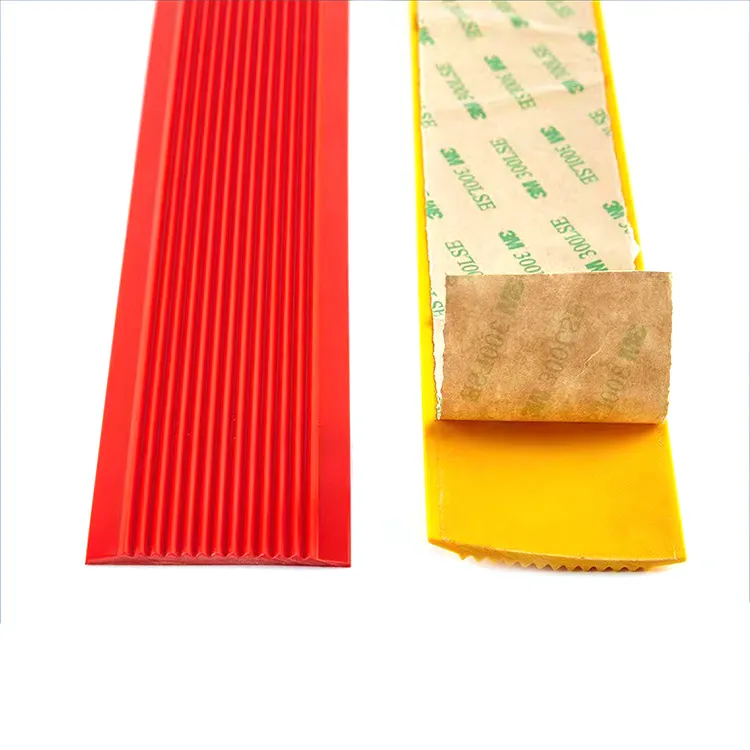solid rubber seal strip
Understanding Solid Rubber Seal Strips Importance, Applications, and Benefits
In various industries and applications, the need for effective sealing solutions is paramount. One standout product in this category is the solid rubber seal strip. Renowned for its versatility and durability, solid rubber seal strips serve as an essential component in numerous settings, including automotive, manufacturing, construction, and home improvement.
What is a Solid Rubber Seal Strip?
A solid rubber seal strip is a long, flexible piece of rubber designed to create a tight and reliable seal between two surfaces. Unlike foam or sponge seal strips, solid rubber strips are made from dense rubber material that provides excellent resistance to wear, temperature fluctuations, and environmental conditions.
These seal strips come in various shapes, sizes, and thicknesses, allowing them to be tailored to specific applications. Common materials used in manufacturing solid rubber seal strips include EPDM (ethylene propylene diene monomer), silicone, neoprene, and natural rubber. Each type of rubber offers unique properties, such as resistance to ozone, UV rays, and extreme temperatures, making it crucial to choose the right material for the intended use.
Applications of Solid Rubber Seal Strips
1. Automotive Industry In vehicles, solid rubber seal strips are used in doors, windows, and trunk lids to prevent water and air leaks. These seals enhance the vehicle's aerodynamics, improve fuel efficiency, and provide cabin comfort by reducing noise and drafts.
2. Construction and Building Solid rubber seal strips are widely used in the construction industry for windows and door frames. They help create a barrier against moisture infiltration, dust, and wind, ensuring energy efficiency and contributing to indoor climate control.
3. Industrial Settings Manufacturing facilities often utilize solid rubber seals to protect sensitive machinery and electrical components from dust, dirt, and moisture. These seals help in maintaining operational efficiency and prolonging equipment lifespan.
solid rubber seal strip

4. Home Applications In residential settings, solid rubber seal strips are commonly used in various areas, including garage doors, bathroom fixtures, and kitchen cabinets. They maintain energy efficiency, enhance comfort, and provide an aesthetically pleasing finish.
Key Benefits of Solid Rubber Seal Strips
1. Durability Solid rubber seal strips are designed to withstand heavy usage and extreme environmental conditions. Their robust material composition ensures that they maintain integrity over time, reducing the need for frequent replacements.
2. Weather Resistance Many solid rubber seal strips offer exceptional weather resistance, protecting against rain, snow, and temperature fluctuations. This feature is particularly valuable in climates with severe weather conditions.
3. Noise Reduction One of the significant advantages of using solid rubber seal strips is their ability to absorb sound. This property is especially beneficial in automotive applications, where a quieter ride significantly enhances passenger comfort.
4. Energy Efficiency By preventing air and moisture leaks, solid rubber seal strips contribute to improved energy efficiency in buildings and vehicles. This leads to lower energy costs and a reduced carbon footprint.
5. Customizability Solid rubber seal strips can be customized to meet specific requirements. Manufacturers can produce strips of various sizes, shapes, and materials to fit unique applications, ensuring optimal performance.
Conclusion
In conclusion, solid rubber seal strips play a vital role across various industries, offering durability, weather resistance, and energy efficiency. Their versatility makes them suitable for application in automotive, construction, industrial, and residential settings. Understanding the importance and benefits of these seal strips can guide individuals and businesses in making informed decisions for their sealing solutions, ultimately leading to enhanced performance and longevity of their products and structures.
-
Under Door Draught Stopper: Essential ProtectionNewsJul.31,2025
-
Garage Door Seal and Weatherstrips for ProtectionNewsJul.31,2025
-
Edge Banding Tape for Perfect EdgesNewsJul.31,2025
-
Table Corner Guards and Wall Corner ProtectorsNewsJul.31,2025
-
Stair Nose Edging Trim and Tile Stair SolutionsNewsJul.31,2025
-
Truck Bed Rubber Mats for Pickup BedsNewsJul.31,2025
-
Window Weather Stripping for Noise ReductionNewsJul.29,2025